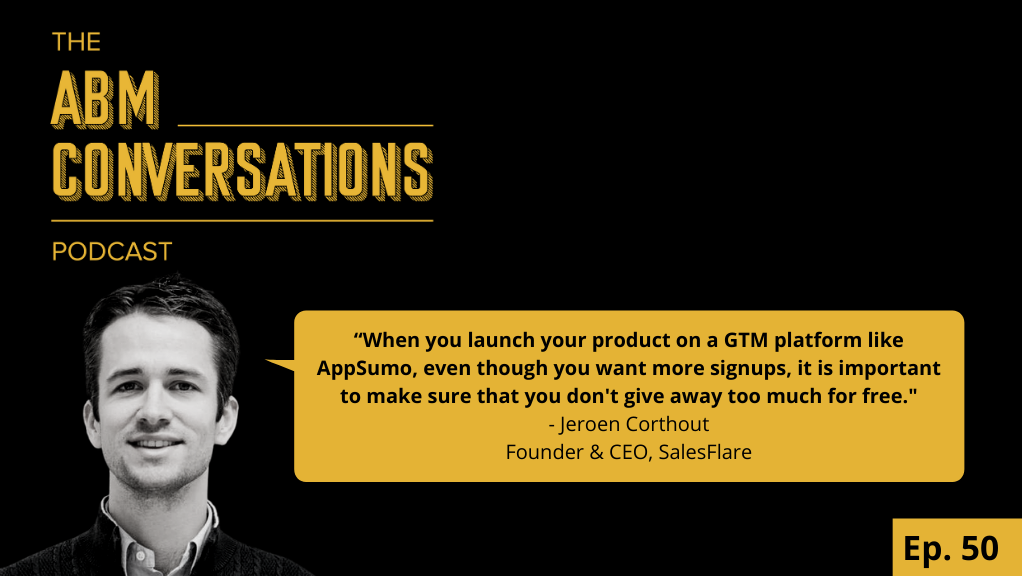After being part of several product launches and even the launch of my books, I can, for sure, tell you – if you build and wait, no one would come. Building your product or writing a book is just one small part of the journey. Regardless of how good your product is, if no one is paying for it or no one wants it, it’ll be dead in the water in no-time.
That said, I think we are at a point in history where we have a massive advantage of testing our ideas before we execute them. Right? For example, we often see people putting out polls on Twitter or LinkedIn, asking people to advise on a particular feature of their product that they are launching. They do it because it gives them a dipstick into the direction they can go or save time by not going in a particular direction.
But the question that any founder has as they are getting started is – how do we get our first 100 paying customers? So, it’s evident that you need to market your product from the very beginning to identify the set of customers who will pay for your product.
And as always, there are a set of things that you do in the early days that won’t scale. The manual things. Yet doing those has its advantages even though sometimes manually doing things is looked down upon in the business domain. For example, we all have often heard the Stripe founders’ story and how the founders pretty much did everything themselves in the early stages.
But, we wanted to talk to someone in our circle who was doing that well. The idea was to see if we can avoid complicating the go to market strategy and journey, which is usually accompanied by a huge checklist. And yet, we wanted to keep a balance from oversimplifying the go to market strategy and missing the basics.
Do not overcomplicate your go to market strategy
While a website or webpage is one of the fundamental needs for you to drive traffic or capture product-interest (e.g., beta users sign up), let’s look at how you can sometimes improvise things on the go, as you are just getting into the game.
One of the products that I have seen proliferate in recent times is this CRM product called Salesflare, a CRM focused on small-size companies. And they had a very basic website when they launched, pretty much with no options even to sign up.
So we decided to do a case study with them.
Case study: The Salesflare go to market strategy
When we asked Jeroen Corthout, the CEO of Salesflare, he said, “When we launched our platform, we did have a website, but we didn’t offer any possibility to sign up through the website and nor did we have a Stripe integration.”
And when we dug further, a couple of things stood out for us.
1. Tap into your network in a non-intrusive way
He started by contacting or tapping into his professional network. He would typically reach out to people to do customer interviews to understand how they were selling, the role of tools they were using, how they contributed to sales, and more. And at the end of the call, he would ask for a referral or rather a suggestion as to who were the 2-3 people they thought he should talk to.
Thus, they went about building a potential customer pipeline to later reach out to regarding their CRM platform.
Take away:
If I have to put this into the Jobs To Be Done framework, you need to make a note of the following while talking to your prospective users:
- Understand each user’s underlying motivation and context: What does their day-to-day task look like? What is their current scenario? Where are they headed?
- Understand their barriers: What is hindering their progress? Are the set of tools used by them currently enabling them or hurting their journey? What are they about to let go, and why?
All these factors help you build a relevant story, motivating them to give your product a spin in the early stages.
2. Build credibility
The next set of things that they focused on was to get featured in some credible and relevant magazines and publications, which became a great source of lead generation. The sales team, including Jeroen, took turns personally onboard new customers and understood how each of them worked. (the little unscalable things that one would accommodate in the early stages)
But there’s a fascinating story here. When Salesflare first came into the scene in 2014, the CRM market was already a red ocean. SalesForce was the hegemon, and there were several other incumbents as well. But that’s where Salesflare decided that they want to focus on smaller companies. They didn’t want to play the enterprise game.
Jeroen says, “These big enterprise CRMs, they are not really built for end-users. They are not really built for practical use. They are meant for streamlining certain workflows and organizations. Whereas with small business CRMs, people expect it to be much more user friendly, practical and easy to implement.”
3. Niche down based on data and observation
There were many smaller CRMs in 2014 (when Salesflare burst into the scene). Although they were much easier to use and much easier to set up, the primary issue was – salespeople never like to spend time on updating the CRM data.
So, the problem Salesflare decided to solve was – automating data updation without the need for people to enter data manually. So, it was not intended as a CRM but as a tool that helped data be auto-updated on CRMs. And because the data was available, it made sense for them to become later on a CRM platform (which was first built for mobile).
Doing the right things on AppSumo to get your first 100 customers
At the outset, doing a launch on a platform, AppSumo seems pretty straightforward. You give the Sumolings a good deal; you get many signups. Get an insight into the level of product-market fit. Win-win.
Nope. Not so fast 🙂
There are two fundamental factors to account for – a) what kind of deal do you make with AppSumo. b) your preparation for the surge in website traffic.
With regards to the deal, make sure that you do not give away everything for free. In the case of Salesflare, they offered one user for free and all others at a discount and kept room for upsells. Doing something like that helps you retain it as a promising avenue for generating signups and respecting the deal made for the AppSumo community.


What we often tend to underestimate is the volume of traffic that is likely to come in. Now, handling volume is not just about the website servers, but about the number of people needed on customer support and onboarding the new customers.
While you look at it broadly, it might look like you are getting many new users. Still, it would help if you made sure that these are small companies or agencies so that you don’t have many overheads or extra costs. Otherwise, the whole idea of using a community like AppSumo will not serve its purpose.
The key focus is always to identify where you are going to get your first 100 customers from. And all your tactics are going to be adjusted around that. But throughout the GTM process, you will learn a lot.
Summing up…
Keep an eye on the good old OODA loop, i.e., Observe, Orient, Decide, Act. Put more simply, know what has happened, ask “so what” and decide “now what.”
It’s not just about the product adoption, but also about the amount of feedback you get to improve your product, the word of mouth and the serendipity around it, the affiliates, the reviews, and a lot more. It all contributes to the success of your launch.



[…] category designer for unlimited graphic design. And what I love about them is that they have very uncomplicated go-to-market approach like […]
[…] inverse nature of product market fit is what makes the concept unnecessarily tricky. It shouldn’t be this complicated though. We have […]
[…] Related: Uncomplicating a startup’s journey […]